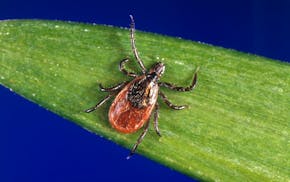The alarm bells started going off in Doug Wenner's head as the first news reports trumpeted a "swine flu" epidemic. Wenner, who raises 10,000 hogs a year with his brother-in-law near St. Peter, Minn., knew his industry had a serious problem when his 16-year-old daughter Brianna came home from school and said kids were asking if it was safe to eat pork. Even here in the Midwest, the hog industry heartland, flu fears gave pork an undeserved bad rap.
The reality is that pork continues to be a smart, safe food choice. You can't get the new H1N1 influenza strain from pork tenderloin, roast, thick-cut Iowa chops or any other pork product sold in grocery stores. That's the bottom line from the U.S. Centers for Disease Control and Prevention, the World Health Organization, the world-class Minnesota Department of Health and, of course, the pork industry itself.
The nation's pork producers recently launched a national media campaign to get out the pork-is-safe message. You may have seen or heard the newspaper and radio ads, or come across the industry's Facebook listing, where safety information was posted to reach the popular social networking site's young users.
Is it working? "There are days when I think that, I hope that," Wenner said with a sigh. "I think it is, but what frustrates me most is that when I turn on the news, I still hear the national media say 'swine flu this, swine flu that.' "
For the record, the H1N1 virus, like other flu strains, is airborne, not foodborne. It's spread by respiratory droplets -- the kind expelled in a cough or sneeze. According to the Minnesota health department, there has never been a documented case of people acquiring influenza from eating pork or handling it. Furthermore, thoroughly cooking pork, beef, chicken and other meat kills any pathogen that may be in it or on it -- that's yet another reason why you can't catch flu from pork.
Still, the swine flu name has stuck. The misnomer's potential damage to consumer confidence couldn't come at a worse time. The pork industry has endured one of its longest downturns ever, an 18-month period when the double whammy of high-priced "inputs" (feed, for example) and low market prices put many farms at risk of going out of business. The H1N1 outbreak occurred just as the industry was poised to recover; industry estimates that struggling producers suffered $63.5 million in losses over a two-week period. No national sales figures were available. The Twin Cities-based Lunds and Byerly's chain reported a significant drop in pork sales during the height of the outbreak, but said sales are starting to rebound.
Much is at stake. The industry is one of the Midwest's economic foundations. Minnesota ranks second nationally in pork production, with hogs generating $7 billion a year for the state's economy along with more than 22,000 jobs. Even more important, pork raised here is a critical part of the world's food supply. Everyone, not just producers, has an interest in the industry's health.
Right now, the nation's two largest pork export markets -- Japan and Mexico -- remain open. Bans are in place in two other key markets: Russia and China. Minnesota's congressional delegation should continue putting a high priority on reopening these markets.
Still, it's American consumers who really hold the industry's fate in their hands. About 80 percent of U.S. pork is consumed domestically. Unfounded fears shouldn't cause consumers to cross it off their grocery lists. Pork continues to deserve its time-honored spot at the family dinner table.

Kudos to St. Cloud's longtime mayor
Readers Write: Ethnic studies curriculum, public notice laws, student protests


